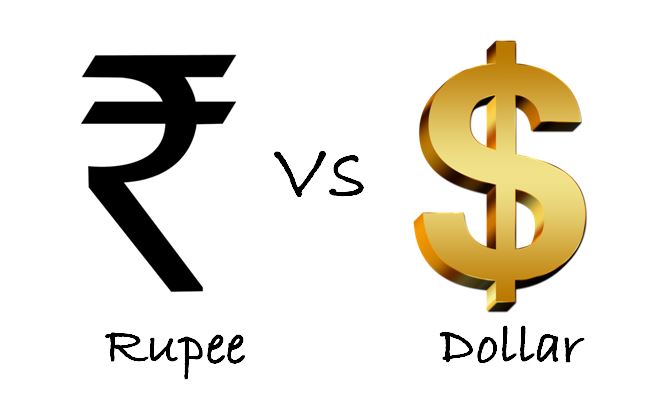Rupee vs Dollar Case Study

During the time of Independence, the value of one dollar was equal to one rupee but today the exchange rate between the dollar and rupee hovers around Rs.70=1 dollar. You might have witnessed headlines like “Indian rupee falling”. Have you ever thought why rupee is falling and Who fixes the value of the Indian rupee as Rs.70 per 1 US dollar? At present, neither the Government nor the RBI fixes the value of Indian Rupee. It is the market forces that determine the value of Indian Rupee.
Indian Rupee and The US Dollar both are legal tenders in their respective countries. But, In today’s world,80% of world trade takes place in dollars. Hence, The Dollar is accepted globally as a medium of exchange to carry out trade activities while Rupee lacks general acceptability. The value of the dollar is supported by the strength of the U.S economy making it a global currency. Let us look at the reasons behind Rupee being a national currency and Dollar becoming the international currency
The recent fall in rupee is linked primarily to the strengthening of the dollar and the share it holds on the global trade. Also, the twin effect of weak economic growth rate of the Indian economy and weak investment cycle are among the important reasons for the currency's poor performance.
The value of any currency in terms of international currency is determined by the demand and supply of the international currency in a particular country and the demand and supply depend on the nature of Balance of Payments (BOP) of a country. Balance of Payment is the record of all the economic transactions between the residents of the country and the rest of the world. If the value of exports is higher than the value of imports, then there will be a surplus in the current account but if the import is more than the export, there will be a current deficit for a country. The supply of dollars in a country is determined by the export of the country and the demand for dollar is determined by the import.
The major components of the supply of dollars into the Indian economy are Exports of goods and services, Foreign Direct Investment, Foreign Portfolio Investment, and NRI transfers. And, the major components of demand for dollars in the country are imports of Fuel, Gold, Non-essential items and Indian Foreign Investment and other outflows. In India, imports from a country are higher than the exports, hence the demand for the dollar is higher than the supply. The Falling growth rate of Indian exports, coupled with a sharp rise in imports, especially of crude oil and gold, have increased this deficit. Hence, In India’s case, since Balance of Payment account continues to have a current account deficit, Dollar continues to overpower the Rupee. The capital account of BOP also determines the value of the dollar against a currency. The capital account details the flow of foreign capital in and out of the country. If there is a large flow of FDI and FPI investment in India which means that the supply of dollars will be higher than the demand, then Indian Rupee will be healthy against the dollar.
India has enough foreign exchange reserves and RBI can use it to counter the volatility of Indian Rupee. The economic strength of the country is very important in deciding the value of the currency. However, the Indian economy is currently encountering structural and cyclical slowdown coupled with low growth rate, high inflation and twin deficit of fiscal and current account. A strategic time-bound long term plan is needed to put the economy back on revival track.
Published on 01-03-2020
Like Our Page To Get Blogs & Market Updates



